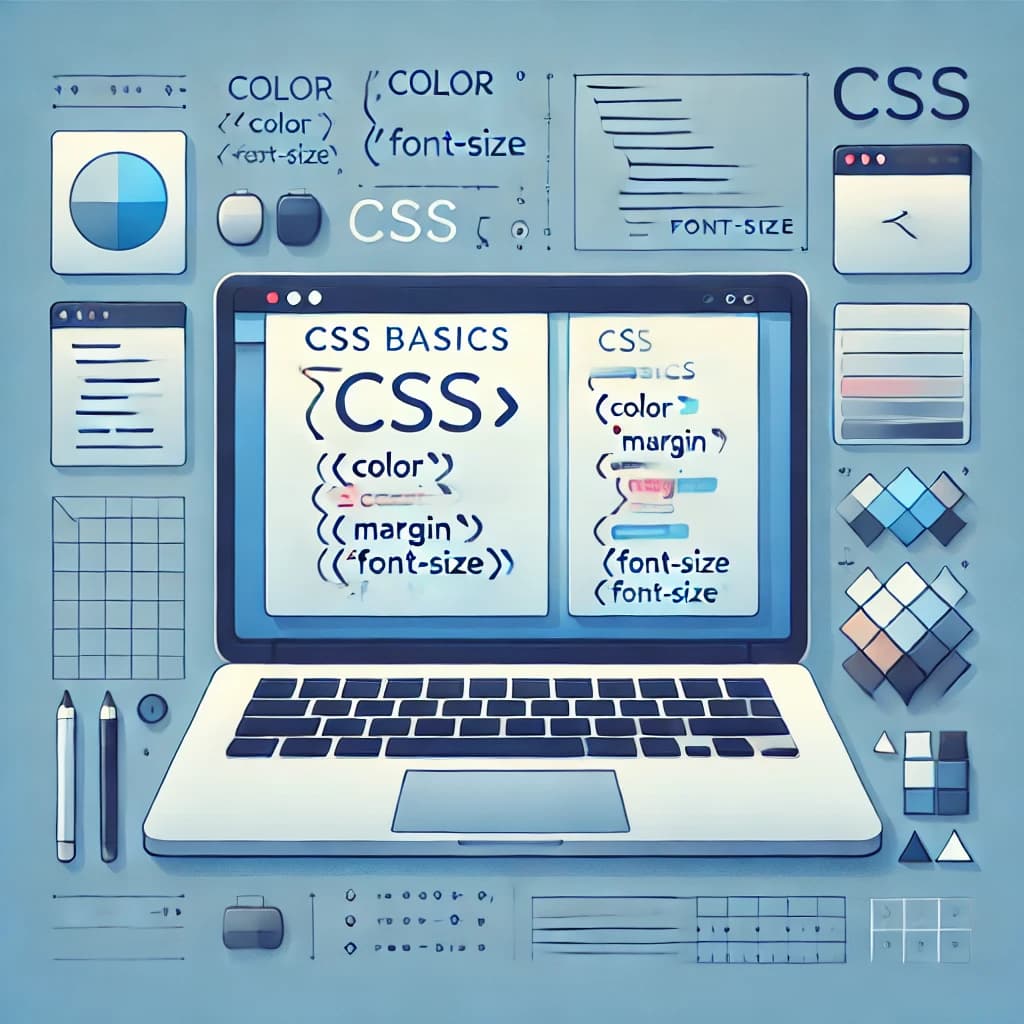CSS Basics Guide

CSS Basics Guide
Introduction
Cascading Style Sheets (CSS) is one of the core technologies of the web, giving developers the power to control the look and feel of websites. If you’ve ever wondered how websites achieve their unique designs, layouts, and styles, CSS is the magic behind it. In this guide, we’ll break down some of the key foundational concepts—selectors, specificity, the box model, layout techniques, and best practices—so you can start styling with confidence.
1. Selectors and Specificity
CSS selectors tell the browser which elements to style, and understanding how they work is essential for writing efficient CSS.
a. Selector Types
Think of CSS selectors like targeting systems—they define what you’re styling. Here are some common ones:
- Universal Selector (
*): Applies styles to everything on the page. - Type Selector (
element): Targets specific HTML tags likep,h1, ordiv. - Class Selector (
.classname): Styles elements that have a specific class. - ID Selector (
#idname): Targets a single element with a unique ID. - Attribute Selectors: Match elements based on attributes, e.g.,
[type="text"]. - Pseudo-classes: Style elements in specific states, like
:hover,:focus, or:nth-child(n). - Pseudo-elements: Allow styling specific parts of an element, like
::beforeand::after. - Combinators: Define relationships between elements, e.g.,
>(child),+(adjacent sibling), and~(general sibling).
For a deeper dive into selectors, check out this CSS Tricks guide.
b. Specificity Rules
Not all selectors are created equal—some have more “weight” than others when determining which styles apply. Here’s the hierarchy:
- Inline styles (e.g.,
style="color: red;") trump all. - ID selectors override class and element selectors.
- Class, pseudo-classes, and attribute selectors have medium specificity.
- Type selectors and pseudo-elements have the lowest specificity.
- The universal selector (
*) has no specificity weight.
If you’ve ever found yourself asking, “Why isn’t my CSS working?” specificity is often the culprit. You can play around with specificity using this specificity calculator.
2. Box Model and Rendering Flow
Every element on a webpage is a rectangular box, thanks to the CSS box model. Understanding this is crucial for proper spacing and layout.
a. Components of the Box Model
Each box consists of four key parts:
- Content: The actual text or elements inside.
- Padding: Space between content and the border.
- Border: The visible (or invisible) boundary.
- Margin: Space between adjacent elements.
b. Box Sizing
By default, an element’s width only includes its content, but you can change that:
box-sizing: content-box;(default): Width excludes padding and border.box-sizing: border-box;: Width includes padding and border, making layouts easier to manage.
Want a more visual breakdown? Check out Mozilla’s guide to the box model.
c. Display and Positioning
CSS controls how elements are displayed and positioned:
- Display Types:
block,inline,inline-block,flex,grid, etc. - Positioning:
static(default, follows document flow)relative(positioned relative to itself)absolute(positioned relative to its nearest positioned ancestor)fixed(stays fixed to the viewport)sticky(hybrid behavior based on scroll position)
3. Layout Techniques
Now that we understand the box model, let’s talk about layout strategies for arranging elements effectively.
a. Flexbox
Flexbox is great for one-dimensional layouts (either rows or columns). It simplifies alignment and spacing:
display: flex;activates flexbox.justify-contentcontrols horizontal alignment.align-itemscontrols vertical alignment.flex-wrapdetermines if items should wrap onto new lines.
Learn more at CSS Tricks’ Flexbox Guide.
b. CSS Grid
For two-dimensional layouts (both rows and columns), CSS Grid is the way to go. Some key properties:
display: grid;activates grid.grid-template-rows;andgrid-template-columns;define structure.gap;controls spacing between items.
For an interactive learning experience, try Grid by Example.
c. Float and Clear
Before Flexbox and Grid, float was used for layouts. It still has its uses, but clearing floats is necessary to prevent unwanted wrapping:
float: left;orfloat: right;moves elements.clear: both;ensures elements don’t wrap around floats.
4. Best Practices for Maintainability
To keep your CSS manageable and efficient:
- Use Variables (
--custom-property): Define reusable values to maintain consistency. - Follow Modular CSS Principles (BEM, OOCSS, SMACSS): Helps structure styles logically.
- Avoid Overusing
!important: It makes debugging harder. - Use Media Queries: Ensure responsiveness across different screen sizes.
- Optimize Performance: Reduce reflows and repaints by minimizing unnecessary styles.
For more tips, check out Google’s Web.dev performance guide.
Mastering CSS takes time, but understanding selectors, specificity, the box model, and modern layout techniques like Flexbox and Grid can take your designs to the next level. Stick to best practices, experiment with different approaches, and keep learning—your future self (and your future stylesheets) will thank you!